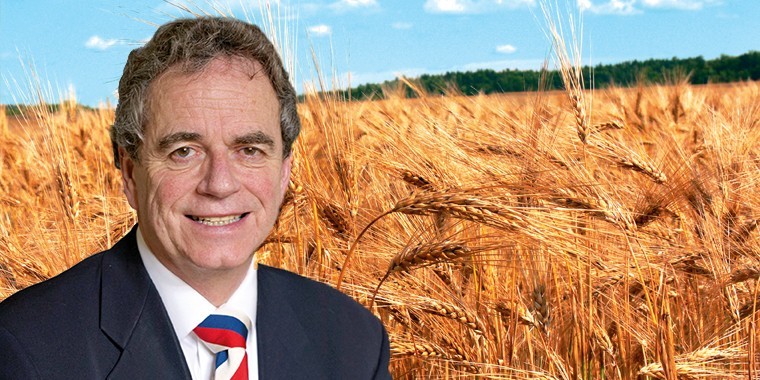Well the 2020 harvest seems to have produced many contradictions so far. In the south, milling wheat has been lower in protein at around 12%. Often low protein signifies a higher yield – as nitrogen has been diluted and utilised in the growing plant – but not this time. The yields are average at best.
It’s normal that high bushel weight over 76kg means a good yield; this is not the case so far, but there is still lots of wheat to be harvested, and it may improve. For no apparent reason, hagbergs have started lower. Instead of 350/400 they are around 250.
All of these quality issues will cause further concern for UK flour millers, who were already faced with having a lot less domestic milling wheat to fill their grist. It is rumoured that as much as 900,000 metric tonnes of German and other EU milling wheat may have already been purchased for import before the Brexit deadline of 31 December. However, the Germans have similar protein problems, so UK millers may have to seek an alternative supply. They will still want to use as much UK milling wheat as possible and will need to be innovative with additives to fortify their grist.
All of this means that the already high milling wheat premiums are likely to increase. Just now, milling wheat is expensive across the whole world. The UK miller already knows that he has the small window of September to December to import milling wheat into the UK tariff free. As things stand, if no formal deal is agreed with the EU by 1 January 2021, the situation will default to a minimum 12 euro per tonne tariff for a limited quota of imported EU milling wheat followed by a penalty import levy of £79 per tonne.
This could now mean a rush by millers to ‘fill their boots’ before Christmas with imports. While milling premiums are likely to be higher than the current £25/£30 per tonne, once the miller embarks upon this course, we may well overdo it, and increased premiums may be at the expense of feed wheat falling in value.
Obviously if less UK potential milling makes the grade, it will create more feed. Also, while we knew we would have to import, or carry over from old crop, anything up to 4.5 million tonnes of all wheat, rapid importation could have a big impact upon our supply and demand balance sheet. It would not be the first year when sky high UK prices were brought tumbling down before the end of the season by overzealous ‘front end’ importations. That’s before you start thinking about all the cheap maize that could replace costly feed wheat in animal feed compounds.
Barley is running a bit truer to form. Our chalkland winter malting barley, like Craft, has produced some excellent good-sized low nitrogen samples and spring malting barley from the chalk has also produced good quality so far. Yields are average, with little drying cost.
Yes, we have a lot more acres of spring barley, but I don’t think that will translate into a much bigger than normal malting barley surplus. Already the barley harvested in the eastern counties is appearing higher in nitrogen than ours; they didn’t have as much rain, so their barley crops are thinner and lower yielding.
Even in the south, we had a lot of late-planted spring barley which germinated unevenly. Secondary and tertiary green tillers have caused big problems with uneven ripening, so some of these crops are being combined and dried hard as feed.
If you add those crops to barley which had to be planted on unfavourable land, or soils which suffered from lack of rain in April and May, there will be a lot less malting surplus than expected. Unlike milling wheat, malting premiums are poor, at about £10. With our good export programme, and if the easing of lockdown means more beer is consumed, perhaps by next spring malting prices will improve.
Another contradiction is feed barley. We are supposed to have a large carry over from old crop, plus the biggest UK barley crop ever seen, but where is it? You get the impression that in anticipation of the big UK barley crop and record world stocks, the whole trade has tried to get in front of it by selling the market short. Well so far, with lots of space that would have housed wheat and oilseed rape, farmers are not rushing to sell. This becomes strange when, as we think we know, the UK will have a 2.5 million tonne surplus to export, and it may be competing with the Black Sea at £110 ex farm!
For months the trade has been hopefully looking for the usual spectre of late summer drought in Russia; they are now talking the wheat crop up in the central “Black Earth” regions to 80 million tonnes.
Oilseed rape is not contradictory; my view has not changed. If we are only getting one tonne to the acre, we will have under 1,000,000 tonnes, needing to import about 900,000 metric tonnes. So you can take your time over selling it. Don’t forget oilseed trading is for consenting adults only!
Lastly the biggest contradiction: Overall in the world we have plenty of grain supply and even allowing for “Covid-19 demand destruction” there is lots of demand to come. So why isn’t anyone trading anything? (Apart from China buying barley from France).




